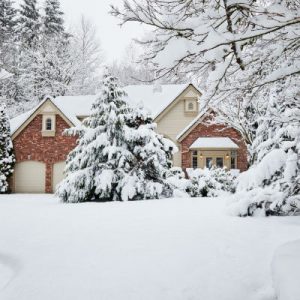
If you haven’t started already, now is the time to prepare your home for freezing temperatures and inclement weather.
“Preparing your home for winter weather is vital to protecting it from damage associated with snow and colder temperatures,” said Scott DeNoon, farm product and underwriting manager for Virginia Farm Bureau Mutual Insurance Co. “A little work now can save a lot of time, energy and frustration in the long run. There’s nothing worse than having to deal with a broken furnace or a burst pipe in the middle of winter.”
Helpful tips and a last-minute checklist for protecting homes and businesses during severe winter weather are made available by the Insurance Institute for Business & Home Safety at disastersafety.org/winter-weather.
At the top of the checklist is the importance of preparedness. Keep an eye on advance weather alerts, and plan accordingly. Having an alternate heating source such as a generator is recommended in case of a power outage, as is having an emergency kit prepared with water, nonperishable food items and other useful supplies.
To maintain a warm interior, it is important to weatherstrip or caulk all windows, doors and exterior walls with any cracks or holes.
Add insulation to accessible attic space, and move any combustible materials away from heating sources.
Attending to your home’s roof is critical, as added weight from snow and ice can cause structural damage. Add support to your roof to accommodate for added weight, and clear gutters, drains and downspouts to allow for proper drainage.
In the instance of ice dams—ice that forms a ridge on the edges of a roof and prevents snow and ice from draining off the roof—extra insulation may be required in ceiling areas to avoid damage from trapped water.
Any accumulated snow should be removed from your roof using a snow rake and an extension arm.
To avoid frozen or bursting pipes, insulate any pipe adjacent to an exterior wall. Allow for ventilation of the pipes by leaving cabinet doors open or using a fan. Allowing faucets to drip can help prevent water from freezing inside pipes.










